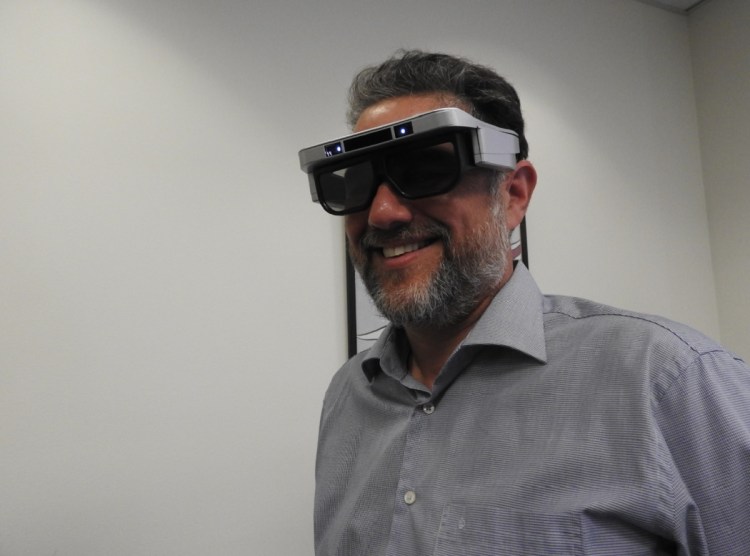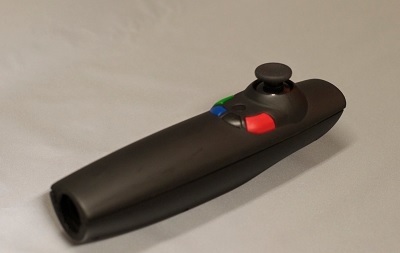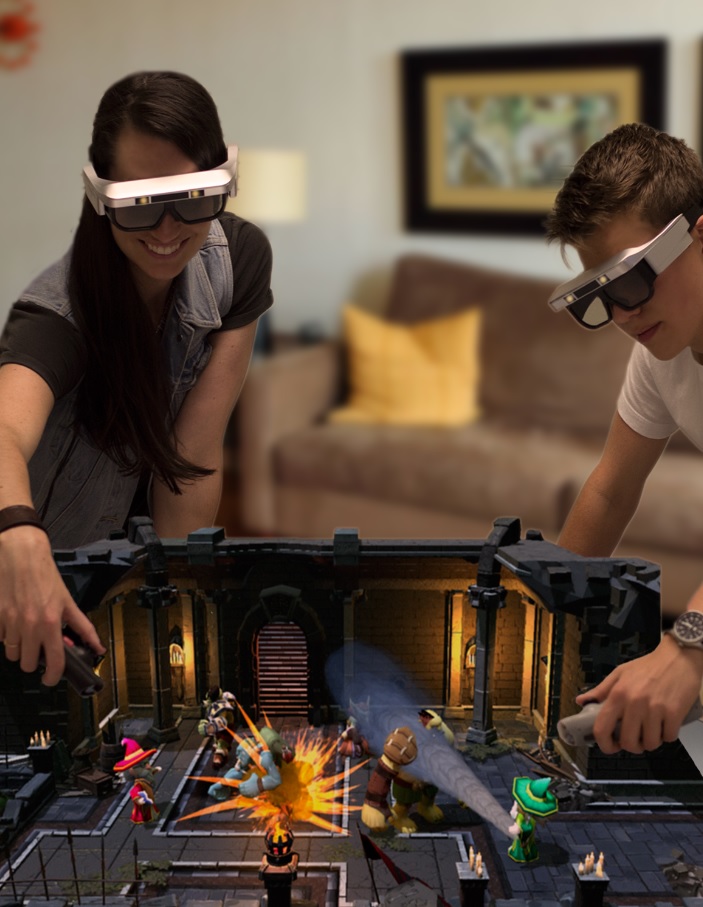Augmented reality gaming glasses startup CastAR has raised $15 million in funding from Android creator Andy Rubin.
The money from Rubin’s Playground Global investment firm brings a variety of benefits, including office space and technical know-how, said David Henkel-Wallace, the chief executive of Mountain View, Calif.-based CastAR, in an interview with GamesBeat.
CastAR has a lot of competition, from Google (which might one day create a new version of its Google Glass project) to Magic Leap, an augmented reality company in Florida with a lot of funding from Google. It will also likely compete with virtual reality companies (which provide goggles that are more immersive because they put you inside virtual worlds) like Facebook’s Oculus VR. But Rubin’s investment brings a very important ally into CastAR’s camp, as Rubin has a lot of money as well as a ton of connections in the tech world.
“One thing you look for investors is what kind of network they have,” Henkel-Wallace said. “It’s really a different kind of firm. They’re very focused on hardware businesses, and they have a model where they’re kind of an incubator. We just closed this deal and we’re already finding them useful.”
CastAR was born as Technical Illusions in the greater Seattle area. It was started as a research project by Valve technologists Jeri Ellsworth and Rick Johnson to build augmented-reality glasses, or ones that can overlay animations and other imagery on top of the real world. Valve decided not to pursue the project, so Ellsworth and Johnson spun out as Technical Illusions. They raised $1 million in funding on Kickstarter in November 2013. Now they’ve moved to Silicon Valley and renamed the company as CastAR.
The CastAR glasses can project 3D holographic images in front of your eyes so that you can either feel like you’re seeing a virtual layer on top of the real world, or you can feel like you’re immersed inside a game world. It works with glasses and a reflective sheet-like material called “retro-reflective.” While you could theoretically use the reflective sheets to animate an entire room, CastAR has decided to focus on using smaller sheets for tabletop gaming.
This week, I talked with Henkel-Wallace in San Francisco and got a fresh demo with a prototype of the glasses. In a demo inspired by the old Marble Madness game, I was once again able to move around a marble through a landscape by tilting my head. I found it very easy to control things in the virtual world, but I could also see everything happening around me the because the glasses don’t obstruct your view of the real world. The imagery was quite sharp.
I also used a “wand” with the glasses to play a Jenga game. I used the wand to slice the bricks.
“We thought Jenga would be more fun with a lightsaber,” Henkel-Wallace said. “This is what we mean by fun. We forget the pleasure of frivolity. My girlfriend’s kids stand on the table when they play. We want to go back to fun.”
I also was able to look at a chess game that resembled the battle chess game in the original Star Wars movie. I could touch creatures with the wand and knock them off the table into a lava pool below. The graphics were crisp, and the field of view had no limitations, in contrast to Microsoft’s HoloLens holographic glasses, which have a more limited 20-degree field of view.
The new round of funding will be used to drive forward business and continue product development efforts as the company looks to drive adoption among tabletop and interactive game developers. Henkel-Wallace said you can imagine a tabletop battle where part of the battlefield is occluded by “fog of war” because your troops haven’t discovered an area yet. CastAR is also focusing its attention on attracting engineering, business, and design talent as it works towards a 2016 commercial launch.
“Among all the confusion about what separates AR from VR, what’s lost is fun,” said Henkel-Wallace. “People want a simple, accessible, fun solution that they can just pick up and play with their friends, without dealing with a bulky, uncomfortable headset, much less being tethered to a big computer. Our goal is to see CastAR on store shelves across North America, aligned with some recognizable brands in tabletop and interactive gaming. Playground’s support will help us get there.”
The company has just 11 people, but it plans to hire more now that it has funding.
“I was really intrigued by David, Jeri, and Rick’s approach to tackling the problem of how to drive mainstream adoption of AR,” said Rubin, the former Google executive and now managing director at Playground Global, in a statement. “They’re the only company I found to be simplifying the utility and application of augmented and virtual reality technology into a fun, accessible, and portable system that will wow kids and adults alike.”
Henkel-Wallace said that the pricing isn’t available yet, but it will be targeted at consumers.
“A $1,000 gaming PC to go with your lenses isn’t a consumer product,” Henkel-Wallace said.
VentureBeat's mission is to be a digital town square for technical decision-makers to gain knowledge about transformative enterprise technology and transact. Learn More



